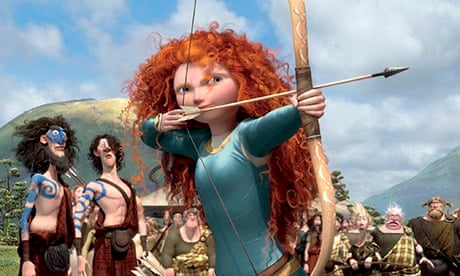Being an author can be a lonely business. As a very reluctant reader in my own adolescence, I wanted to write stories that would inspire kids to crack open a book instead of load up a video game. But I didn't quite expect the isolation that comes with a writer's life.
Alone in my home office or surrounded by strangers in the coffee shop, my only colleagues are my characters. And while I do talk to them (yes, aloud, and yes, in the café), they don't make for great water cooler moments.
As I was wrestling with my self-imposed solitary confinement, I had a chance to meet Mary Coleman, the development executive at Pixar at the writer-centric Austin Film Festival (I had a little zombie film showing). The encounter changed my entire approach to creativity. Mary was inspiring because she shed daylight on the dark art of storytelling. For the first time, I encountered a structured and collaborative approach to building stories. I didn't have to do it alone.
The Pixar process is highly iterative, soliciting feedback from an established brain-trust of talent and the wider Pixar community to continually improve a movie during development and production. Harkening back to their software roots, Pixar beta tests each film with both these groups many times in the form of animatic assembly (black and white, motion storyboards) before committing to fully rendered, expensive animation.
At Pixar, the director is the final judge of any feedback, empowered to accept or reject any comment. From this, I gleaned two things I could apply to my own creativity: the first was to iterate more and the second was to collaborate with other talent.
I decided to iterate with a new book project, Alienated, about the only human boy at a high school for aliens at Area 51. I opened up the creative process to young readers (aged nine to 12) in schools and online. I shared work in process drafts, workshopped new characters and pitched new plots in order to solicit honest feedback. And let me tell you, 12-year-olds do not pull their punches.
This wasn't creativity by committee, but beta testing. I wasn't interested in writing to the lowest common denominator, but raising the story, characters and world to the highest possible exponent. Like Pixar, I chose to accept and incorporate some pieces of feedback and completely ignore others. As a writer, it challenged me to up my own game. And when the book is presented to publishers at Bologna children's book fair, it will have gone through seven iterations – about the same as a Pixar film.
As for the second Pixar lesson – collaborating with other talent – there's a certain amount of literary snobbery to this approach. People love to romance the idea of an author, alone, at the writing desk. Paradoxically, I notice these same snobs soaking up big US television dramas like Breaking Bad and Game of Thrones, which are written in a writer's room model where several writers collaborate with a runner. The brilliant writing on these shows is a team effort. If the best television shows use a collaborative approach to storytelling, why shouldn't I?
My personal creative role model is JJ Abrams of Lost, Alias and Super 8 fame. His Bad Robot production company works on a small slate of big ideas with the most talented people. I sought to apply his approach to development and production by launching my own creative incubator called Awesome. And after flying solo at the writing desk, I decided to look for some co-pilots – in addition to my own writing, I'd create new stories but write them with someone else.
One such project was a response to my sister's frustration with the pink ghetto of Disney Princess and Barbie. Having graduated from Dora The Explorer (a pre-school Indiana Jones), my six-year-old niece was being served cultural role models that focused on fairy tale romance and shopping. I developed an original concept, character set, storylines and mythology, then teamed up with a talented author called Julie Sykes to help write a new book series that would offer an adventure alternative.
Working together with our editor, we applied the Pixar iteration approach and came up with The Princess Ponies series (think My Little Pony meets Lost). It's a true Trojan horse: an ass-kicking, swash-buckling adventure wrapped in sparkles. We're closing in on selling 100,000 books, mostly directly to children through the book clubs and fairs that go into schools, and hopefully inspiring a generation of young girls with tall tales of high adventure.
I still have my own passion projects that I write the old fashioned way – alone at my desk, talking to my fictional friends – but by pinching from Pixar and Bad Robot, I'm able to scale up my own creativity beyond what I could ever achieve on my own. Best of all, by working with other writers, I'm inspired to improve my own craft. Pinching from Pixar has made my writing life a lot less lonely and a ton more fun.
Jeff Norton is author of the MetaWars series (Orchard Books) and the upcoming trilogy, Memoirs of a Neurotic Zombie (Faber) – follow him on Twitter @thejeffnorton
This content is brought to you by Guardian Professional. To get more articles like this direct to your inbox, sign up free to become a member of the Culture Professionals Network.

Comments (…)
Sign in or create your Guardian account to join the discussion